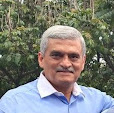A recent status message I posted on Facebook:
The next time you're at Subway, go for the Italian BMT — it really hits the spot! Leave out the "pickle" (as I did yesterday), add an extra dose of the jalapeno, and stick to the barbeque and honey-mustard sauces. Important: Ask for the honey-oat bread. Scrumptious!
I had to edit it down for Twitter:
Next time at Subway, go for the Italian BMT on honey-oat bread. No "pickle"; extra jalapeno; barbeque and honey-mustard sauces. Divine!
BTW, I didn't know what BMT stood for. Here's what I learned from Yahoo Answers:
The "B.M.T." sandwich at Subway was originally named after the "Brooklyn-Manhattan Transit." Consisting of sliced genoa salami, pepperoni, ham and your choice of salad, it has become one of the chain's most popular subs. With time, the sub's name has evolved to mean "Biggest, Meatiest, Tastiest."
2. As Neilima Bh. P. (Class of 2012) pointed out in a Facebook conversation recently, you get to "follow" celebs, experts, stars, even well-known journalists (though you have to hope that it's not some PR hacks tweeting on their clients' behalf) and read what they have to say about issues that interest them (and possibly us). I follow Rajdeep Sardesai, for instance, and his tweets bring me up to date on the major news events of the day. One of Rajdeep's tweets also led to my discovering the Indicast Podcast Network, in my opinion the best Indian website for podcasts. Media students will love IPN and our AVC students who need to produce a radio feature will get some ideas — check it out here.
- Satish Perumal (Class of 2011) adds: We think of Twitter and Facebook as networking tools which we use to keep in touch with friends and relatives. I, too, thought these networking sites were good only for having a... er, good time, an escape tunnel from the real world to the virtual one.
But I did a rethink recently after a job interview with a social marketing company, Uncut Donut. The interviewer asked me for my Twitter ID and immediately scanned all my tweets, looked at my profile, and tried to get a fix on what kind of topics interest me. I was taken aback a bit by this turn of events and did not know how to react.
Moral of the story: These networking sites might be fun, but these days they are a launch pad for the careers of many ambitious youngsters. And HR departments use them as recruitment tools too. So go ahead and get cracking with your networking!
- Also read: "Facebook: Boon or bane?"



















